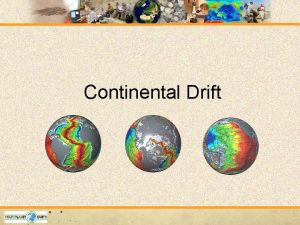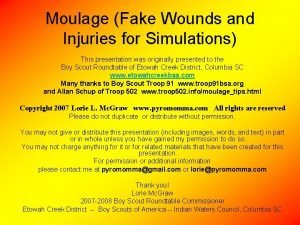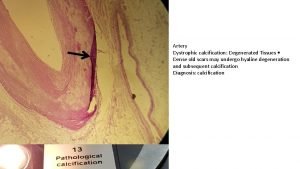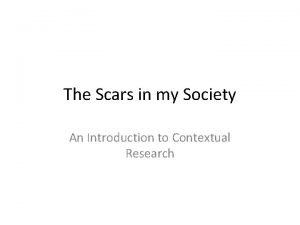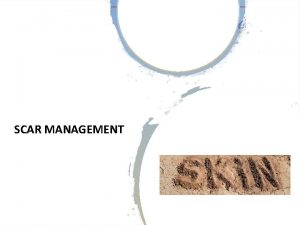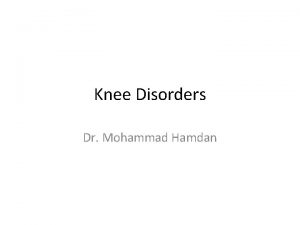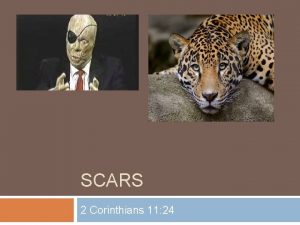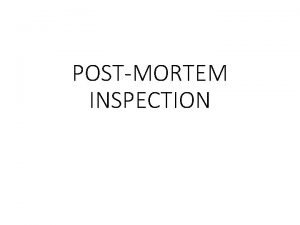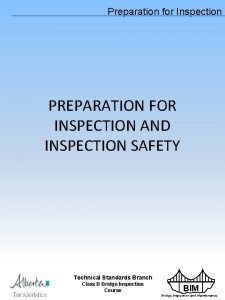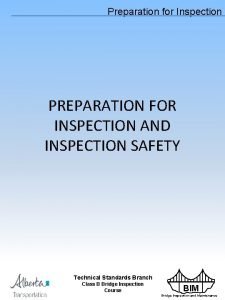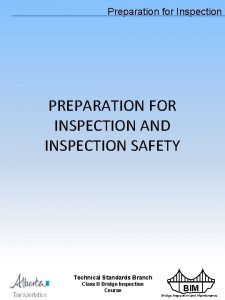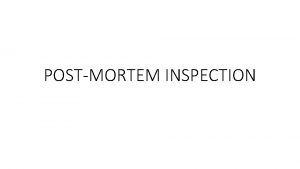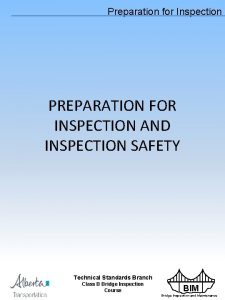Knee PE Dr Mohammad Hamdan Inspection Skin scars












- Slides: 12

Knee PE Dr. Mohammad Hamdan

Inspection • Skin • scars • trauma • erythema • Swelling • Muscle atrophy • normal quadriceps circumference • 10 cm (VMO) • 15 cm (quadriceps) • Asymmetry • Gait • antalgia • stride length • muscle weakness • Standing limb alignment • neutral, varus, valgus

Palpation • Joint line tenderness • Tenderness over soft tissue structures • pes anserine bursae • patellar tendon • iliotibial band • Point of maximal tenderness • Effusion • patella balloting • milking

Range of Motion • Active and passiveflexion/extension normal range • 10° extension (recurvatum) to 130° flexion • rotation varies with flexion • in full extension, there is minimal rotation • at 90° flexion, 45° ER and 30° IR • abduction/adduction • in full extension, essentially 0° • at 30° flexion, a few degrees of passive motion possible

Special Tests

ACL Injury • Large hemarthrosis • Quadriceps avoidance gait (does not actively extend knee) • Lachman's test • most sensitive exam test • grading • • A= firm endpoint, B= no endpoint Grade 1: <5 mm translation Grade 2 A/B: 5 -10 mm translation Grade 3 A/B: >10 mm translation • PCL tear may give "false" Lachman due to posterior subluxation • Pivot shift • extension to flexion: reduces at 20 -30° of flexion • patient must be completely relaxed (easier to elicit under anesthesia) • mimics the actual giving way event

PCL Injury • Posterior sag sign • patient lies supine with hips and knees flexed to 90°, examiner supports ankles and observes for a posterior shift of the tibia as compared to the uninvolved knee • Posterior drawer (at 90° flexion) • with the knee at 90° of flexion, a posteriorly directed force is applied to the proximal tibia and posterior tibial translation is quantified • the medial tibial plateau of a normal knee at rest is ~1 cm anterior to the medial femoral condyle • most accurate maneuver for diagnosing PCL injury

MCL Injury • Valgus instability = medial opening • 30° only - isolated MCL • 0° and 30° - combined MCL and ACL and/or PCL • classification • Grade I: 0 -5 mm opening • Grade II: 6 -10 mm opening • Grade III: 11 -15 mm opening • Anterior Drawer with tibia in external rotation • grade III MCL tears often associated with ACL and posteriomedial corner tears • postive test will indicate associated ligamentous injury

LCL Injury • Varus instability = lateral opening • 30° only - isolated LCL • 0° and 30° - combined LCL and ACL and/or PCL • Varus opening and increased external tibial rotatory instability at 30° - combined LCL and posterolateral corner

Meniscus Injury • Mc. Murray's test flex the knee and place a hand on medial side of knee, externally rotate the leg and bring the knee into extension • a palpable pop or click is a positive test and can correlate with a medial meniscus tear

Patella Pathology • Large hemarthrosis • absence of swelling supports ligamentous laxity and habitual dislocation mechanism • • • Medial-sided tenderness (over MPFL) Patellar apprehension Increased Q angle Grinding test Squeezing test




